ReFi and Green Crypto: How Blockchain Helps the Climate
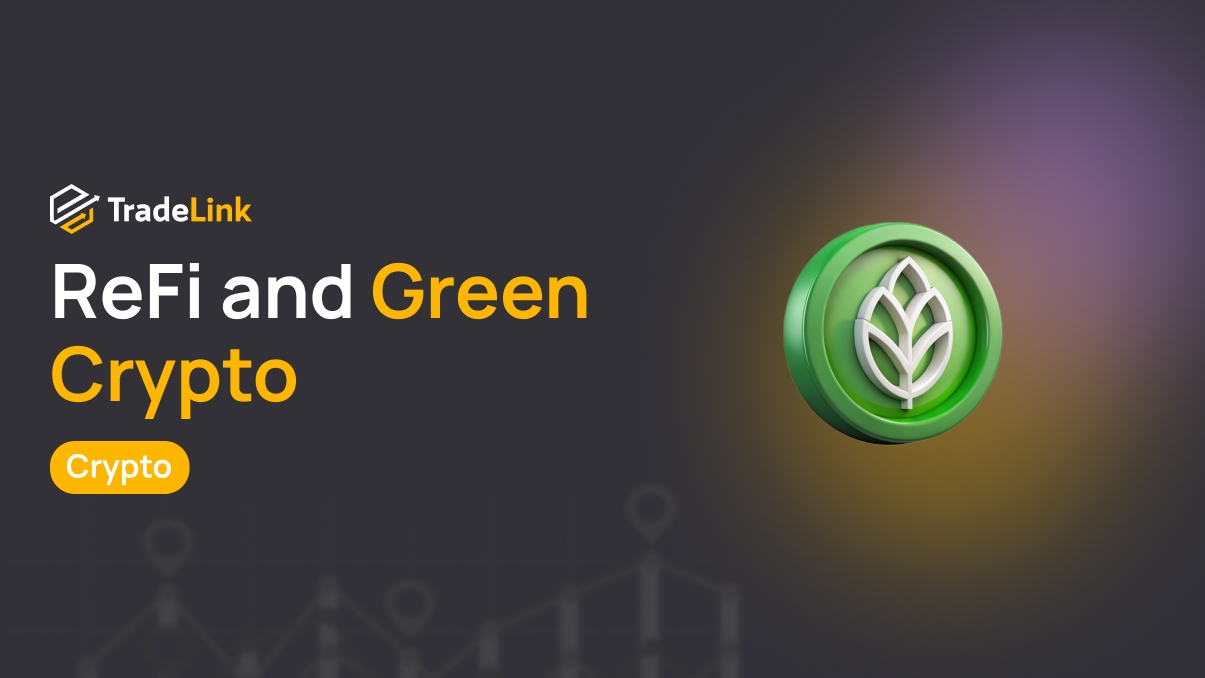
Contents
- Introduction
- What is ReFi in Cryptocurrency
- Core Principles of ReFi
- How ReFi Works on the Blockchain
- What Is Green Cryptocurrency
- Examples of ReFi and Green Crypto Projects
- ReFi vs DeFi: What’s the Difference
- Risks and Limitations of ReFi
- The Future of ReFi and Green Crypto Projects
- Conclusion
Introduction
Cryptocurrencies have been evolving for over a decade. During this time, they’ve proven that money can work without banks — openly and transparently. But with popularity came criticism. The primary concern is environmental harm. Some blockchains consume excessive energy, and many believe this harms the climate.
This is where the concepts of green crypto and Regenerative Finance (ReFi) come into play. These concepts aim to combine blockchain’s potential with environmental care. The goal is not just to reduce harm, but to create systems where crypto brings tangible benefits to nature. This has become especially important as the world fights climate change and searches for more sustainable economic models.
This article explains how green crypto differs from traditional crypto, the technologies that make it possible, and how it could reshape Web3.
What is ReFi in Cryptocurrency
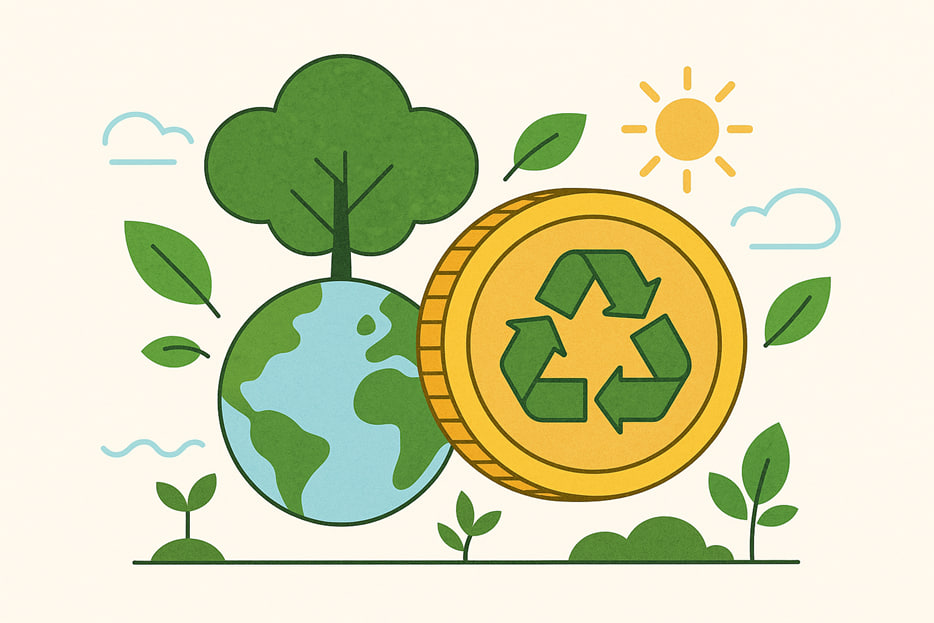
ReFi is a concept that utilises finance to heal nature instead of harming it. It is built on blockchain technology and leverages open data, transparent rules, and digital assets to achieve its environmental goals.
The primary concept of ReFi is to direct capital toward initiatives that repair damage or promote sustainable growth. For example, buying tokens that help protect forests or joining platforms where users earn rewards for cutting emissions. Blockchain makes this possible: actions are recorded, and results can be verified.
It’s essential to understand how ReFi differs from traditional investing. Standard markets usually focus on profit. ReFi goes further — it puts nature, community health, and long-term balance at the center.
Core Principles of ReFi
ReFi relies on a few simple but powerful ideas. All of them aim to make finance a force for good, rather than harm. These are the four main principles behind regenerative finance in Web3:
- Environmental Regeneration
The goal of ReFi isn’t just to reduce harm — it should help nature recover. This includes forest protection, sustainable farming, water cleanup, and lowering emissions. - Transparency
All information about actions, transactions, and fund distribution is stored on the blockchain. No one can fake it. - Decentralization
There’s no central authority in ReFi deciding where the money goes. Everything runs on smart contracts and community involvement. - Inclusion
Anyone with a wallet and internet can join a ReFi project. It doesn’t matter where they live or what documents they have. This openness brings more people into green crypto solutions.
How ReFi Works on the Blockchain
To move from idea to reality, ReFi uses specific blockchain tools that connect digital systems to real-world action.
- Asset Tokenization
Blockchain enables real-world activities and resources to be converted into digital tokens. A company, for instance, can issue a token that proves it planted a tree or preserved a piece of land. These tokens become part of the ReFi blockchain and can be transferred, stored, or used in other protocols. - On-Chain Incentives
People earn rewards for doing good, such as buying carbon credits or supporting eco-friendly projects. These actions are recorded on-chain. This creates on-chain motivation — helping nature brings digital benefits. - Decentralised Platforms
Many ReFi projects are built on open protocols. The code is public, and communities make decisions. This fosters decentralised sustainability, where governance is not dependent on corporations or governments. Instead, a network supports the planet and builds fair economies.
These tools enable ReFi in crypto to bring together technology and nature, transforming blockchain into a tool for real change.
What Is Green Cryptocurrency
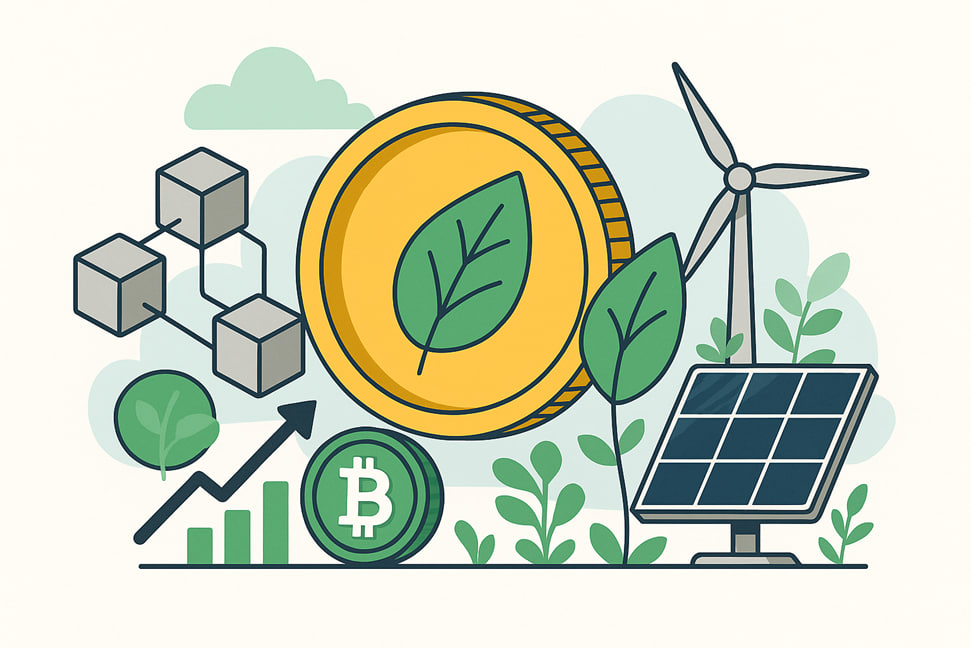
Green cryptocurrency is a digital asset created and maintained with minimal environmental impact. Unlike traditional blockchains, these projects aim to reduce emissions, utilise energy-efficient technologies, and support environmental sustainability goals.
To be considered green crypto, a project must meet several criteria:
- Eco-Friendly Technology
The project uses energy-efficient methods. For example, proof of stake instead of proof of work. This reduces the carbon footprint of the blockchain, making it less harmful to the climate. - Emissions Offsetting
The project offsets its environmental impact. This might involve purchasing on-chain carbon credits or participating in nature-based programs. This helps achieve the status of a carbon-neutral cryptocurrency. - Support for Real Environmental Initiatives
If a crypto project spends part of its resources to protect nature, it’s more than just marketing. It takes part in real work — restoring forests, supporting recycling, or developing solar and wind energy. - Transparency and Accountability
The blockchain records every movement of funds, including the amount sent, the originating address, the destination address, and the time of transfer. If the project uses open-source smart contracts and shows how its fund distribution works, anyone can verify it. This lets people track whether a token was issued, where the funds went, and how much was raised. In the ReFi blockchain, this approach builds a foundation of proof, not just promises.
Examples of ReFi and Green Crypto Projects
The ReFi and green blockchain space is growing fast. Several strong solutions have already appeared in key areas:
Infrastructure Projects
These are base-level blockchains and protocols that reduce energy consumption and help others develop eco-friendly applications.
- Celo — a mobile-first blockchain focused on sustainability. It supports decentralised climate solutions and aims to operate on renewable energy.
- Algorand is one of the carbon-neutral cryptocurrencies. It uses an efficient consensus mechanism and regularly offsets emissions.
DAOs and Climate Communities
Some organisations are built as decentralised autonomous organisations (DAOs) that focus on protecting the natural world.
- KlimaDAO — one of the leading projects in ReFi. It works with tokenised carbon credits, which are digital tokens tied to one ton of reduced or offset CO₂ emissions.
- Toucan Protocol — an ecosystem that links carbon credits with the blockchain, making them liquid and accessible in DeFi.
ReFi Ecosystems
These are platforms where finance, ecology, and social value intersect.
- Regen Network — a platform that tracks environmental impact. It utilises the blockchain to record eco-friendly actions, such as tree planting, land protection, or emissions reductions. Verified actions earn digital certificates that can be used in other ReFi projects.
- Flow Carbon — a project that turns carbon credits into blockchain tokens. These tokens are tied to absolute emission offsets and can be bought, sold, or used within ReFi protocols.
ReFi vs DeFi: What’s the Difference
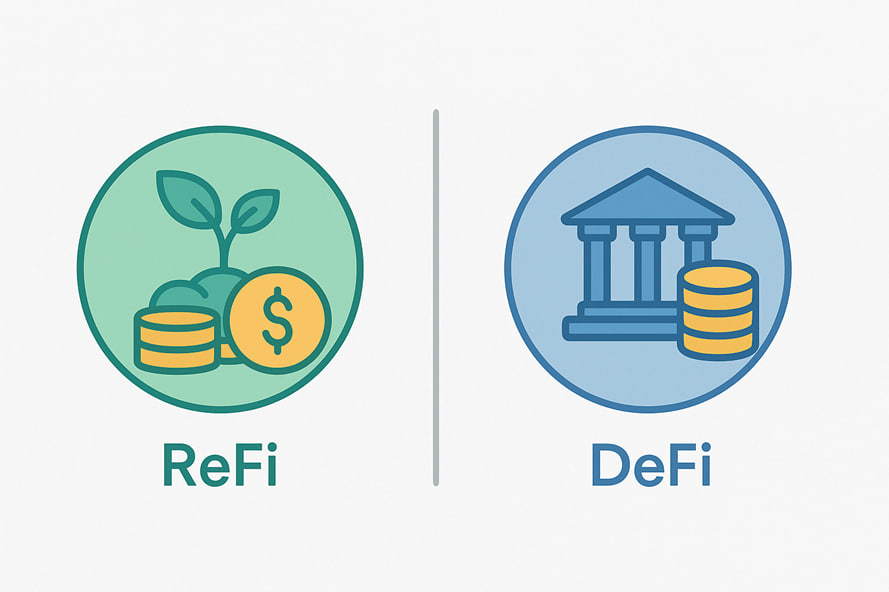
| Criteria | DeFi (Decentralised Finance) | ReFi (Regenerative Finance) |
|---|---|---|
| Goal | Open access to financial tools and yield | Benefit for nature and society beyond just profit |
| Focus | Profit, efficiency, returns | Environmental impact, climate value, social meaning |
| Incentives | Rewards for liquidity, activity, and risk | Rewards for action include tree planting and carbon token purchases, among others. |
| Tools | Smart contracts, liquidity pools, derivatives | Smart contracts, tokenised carbon credits, climate DAOs |
| Risk Approach | High returns and volatility, aggressive strategies | Focus on stability, transparency, and long-term trust |
| Value for Ecosystem | Financial benefit for users | ReFi crypto aims to improve the environment and expand its positive impact |
| Audience | Traders, developers, investors | People who care about the environment, impact, and social purpose |
Risks and Limitations of ReFi
ReFi is growing but still new. It faces several challenges that could slow progress or distort the core idea.
- Unclear Regulation
ReFi projects reside on the blockchain but often involve real-world assets, including carbon credits, natural resources, and social programs. These areas usually fall under government control. Without clear rules, projects may face restrictions — especially those tied to climate tokens. - Verification Issues
Even if a project claims to plant forests or cut emissions, it’s hard to prove. Blockchain records transactions but can’t confirm real-world events. Data sources — such as satellites, sensors, and oracles — can be incorrect. Without solid verification, people may stop trusting these claims. - Greenwashing
Some projects use the “green” label solely for marketing purposes. They issue tokens, talk about saving the planet, but never deliver real actions. This damages ReFi’s reputation and confuses newcomers. - Economic Fragility
Many ReFi projects rely on grants, donations, or small developer teams. Without a stable income model, they may be forced to shut down. Even with a great mission, if the system can’t sustain itself, it won’t last. - Low Interest (For Now)
Much of the crypto world still focuses on fast profits. Not everyone wants to invest in long-term goals or climate action. That’s why demand for ReFi is still small. Without support from big players and communities, growth stays slow.
The Future of ReFi and Green Crypto Projects
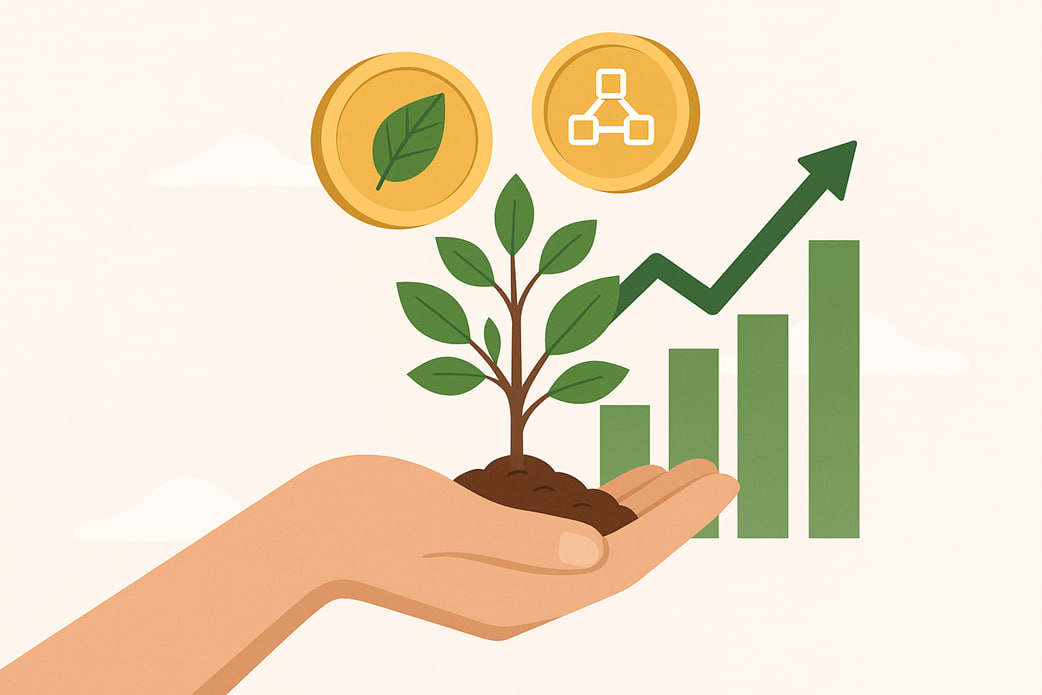
Despite the challenges, interest in ReFi is on the rise. It’s not a trend — it’s a natural response to real problems in the blockchain industry.
- New Investor Attention
Significant funds now seek projects that demonstrate their value — especially in ESG investing. These investors prefer platforms that don’t harm nature. If a ReFi project shows real-world impact, it gets a head start. - Tech Improvements
New tools are making ReFi easier and more reliable — tokenised carbon credits, oracles, verified smart contracts. This reduces risks and simplifies participation. For users, things are clearer. For developers, it is more stable. - Web3 Integration
ReFi is no longer isolated. It’s joining DeFi, NFTs, and gamified systems. For example, in-game actions may have real-world ecological consequences. This brings together purpose and engagement in one product. - Shift in User Priorities
New generations want more than yield — they want purpose. They choose honest products that help the world. This creates demand for eco-friendly crypto and supports ReFi growth.
Conclusion
The blockchain world faces a major test: to maintain freedom and innovation while avoiding harm to the planet. Profit-only models don’t match the needs of today.
ReFi offers a new path. It connects decentralisation, transparency, and care for the future. It shows that blockchain can help — not just count tokens. This isn’t a replacement for traditional projects, but their next step — with real meaning at the core.